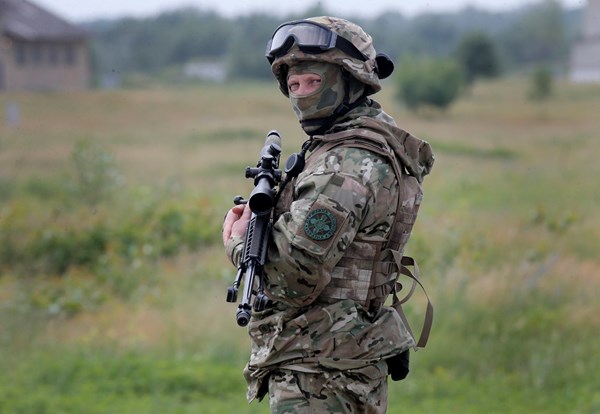Ukrainian incursion expands as conflict nears Belgorod region
The "Kursk Operation" successfully extends into the Belgorod region, prompting civilian evacuations in Krasnoyaruzhsky District. Skirmishes along the Ukrainian border place the Kremlin in a strategic bind: relinquish its territory or press further into eastern Ukraine.
Over the weekend, the frontline in the Kursk region widened. As of August 10, operations on Russian soil spanned up to 720 square kilometers. By the evening of August 11, that number had grown by another 70 square kilometers.
Russian authorities acknowledge a successful raid by purported Ukrainian paramilitary units in the southern Belovsky District, with incursions near the village of Kuchery. The farthest clashes from the Ukrainian border occurred in the village of Obshchiy Kolodez in Kursk's Korenevsky District. The Russian Ministry of Defense claimed to have halted "enemy mobile groups on armored vehicles" there, with the western front shifting around Tolpino and Zhuravli villages.
"Ukrainian forces are digging in within the Kursk region" and do not intend to withdraw. Journalists discovered that these forces comprise five brigades, each around 2,000 personnel, plus an additional battalion of up to 400 soldiers,“ Forbes reports.
Both sides prepare for a standoff, though this doesn't mean the assaults on Russian territories will cease or that Russian forces will stop counterattacking to push unidentified units back across the border. Despite these rapid advances on Russian soil, the State Duma contends there's no need for mobilization. The parliamentary defense committee, chaired by Andrei Kartapolov, insists current forces are sufficient.
On the morning of August 13, the eighth day of the confrontation in Russia, evacuations were announced due to the "presence of Ukrainian forces" in Belgorod's Krasnoyaruzhsky District. Russian military correspondents noted an attempted breach at the "Koltinovka" border crossing, but reports of tank columns were unverified. A tank and a couple of armored personnel carriers moved to the border crossing, with shootouts lasting five to six minutes.
Later, it emerged that around 11,000 residents of the Krasnoyaruzhsky District were relocated to safe zones, with further evacuations promised by district head Andrey Miskov. The district lies in northwestern Belgorod, roughly 45 kilometers from Sudzha in the Kursk region. Before the "Kursk Operation," the Koltinovka-Pokrovka crossing was the only functional border point.
Expanding the foothold in Belgorod aims to disrupt the logistics of the "North" army unit, argued Alexander Musiyenko, head of the Center for Military-Legal Research, in a conversation with Focus.
"This move should be made if there are sufficient means and resources to divert significant troop numbers from Donbas. The enemy's forces will be stretched thin, creating a zone of instability and a strategic dilemma for the Kremlin: to cede territories or advance further east into Ukraine," he said.
Musiyenko considers the advance from Krasnaya Yaruga to Shebekino plausible, which could safeguard the Kharkiv direction against rocket and bombing attacks. Russian logistics for Volchansk depends on Shebekino, so roadblocks in the area would defend Ukrainian borders.
The "Kursk Operation" has already drastically reduced guided bomb strikes on Kharkiv. Previously hitting border areas 30 to 60 times daily, current intensity totals no more than ten strikes, provided by Kharkiv Regional Military Administration head Oleg Synegubov.
"Our armed forces' effective work has evident results," observed the official.
Operations in Kursk and Belgorod are stretching Russian occupational forces in Ukraine. Unidentified units smartly move under gas pipeline and powerline cover to evade aviation, explained Dmytro Zhmailo, Executive Director of the Ukrainian Security and Cooperation Center, to the news outlet Focus.
"Russian troops value infrastructure more than civilian houses. The larger the so-called 'buffer zone,' the better," he stated.
Ukrainian troops have "preempted Moscow's plans" of invading Sumy, following the Kharkiv pattern, but Russian forces will delay moving units from Pokrovsk and Toretsk to the Chasiv Yar area as long as possible.
For Kursk's defense, Russia employs conscripts, guards from state enterprises, and select units of the 810th Black Sea Fleet brigade. Expert estimates show manpower increasing alongside rising casualties.
